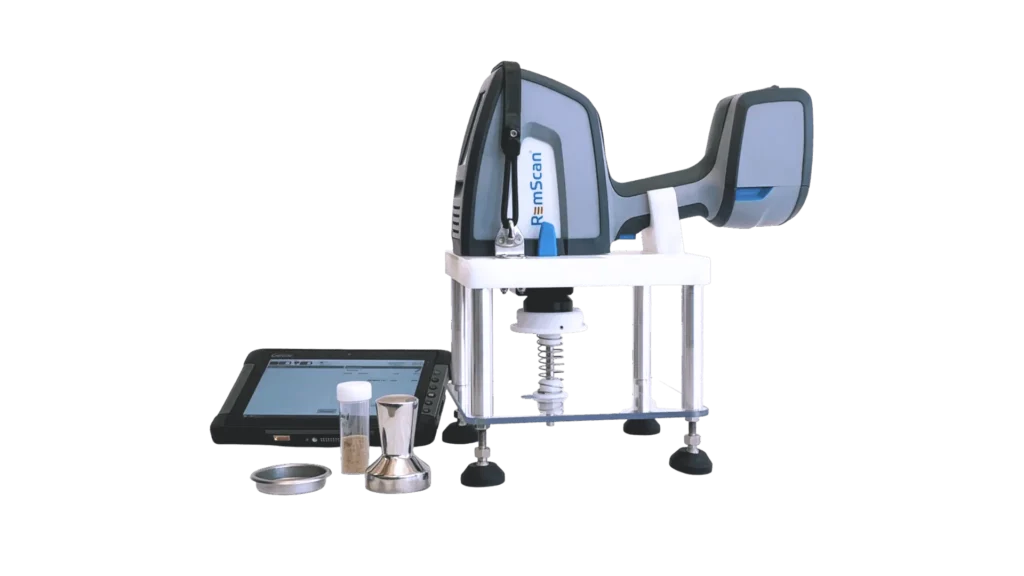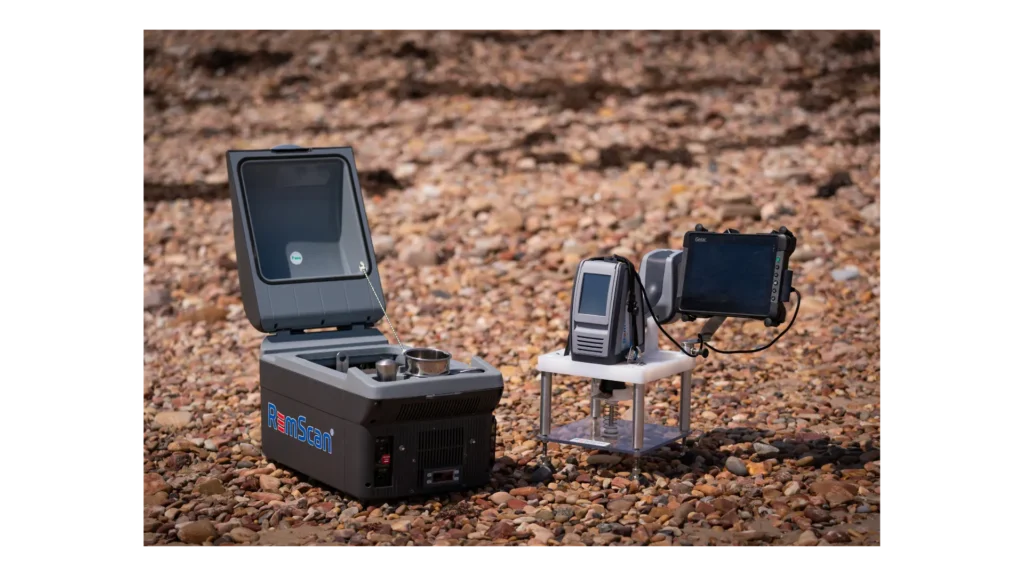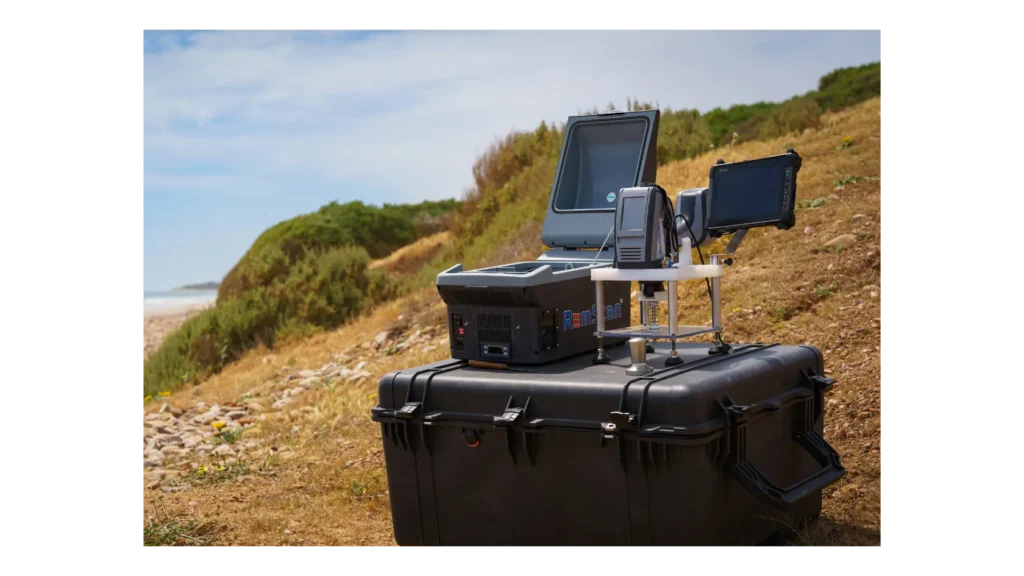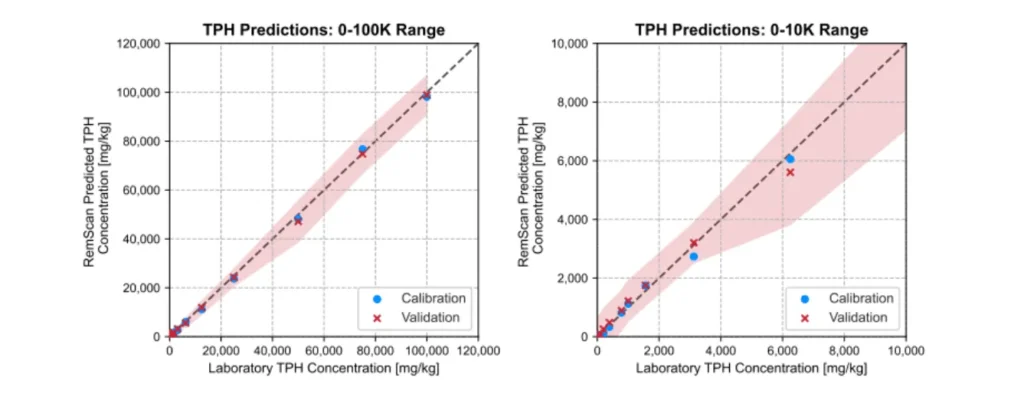RemScan
RemScan is an advanced portable device designed for rapid, on-site evaluations of total petroleum hydrocarbons (TPH) in soil. By bypassing the requirements for soil extraction and extra consumables, RemScan delivers immediate and dependable results. It has proven to be an indispensable tool in global remediation projects, from the oil fields of Kuwait, the Niger Delta and Indonesia to mining and industrial sites across Europe, Asia, North America and Australia, solidifying its reputation as the leading technology for in-field TPH measurements.



PRIMARY FEATURES
- TPH Assessment: Measures total petroleum hydrocarbon content in soil (>C10).
- Soil Analysis: Simultaneously determines soil moisture levels, particle size distribution and classifies soil texture (IUSS).
- Result Swiftness: Measurements take just 30 seconds.
- Accuracy: Provides precision comparable to gold standard laboratory analysis.
- Versatility: Suitable for on-site evaluations or laboratory settings.
- Sample Metadata: Allows logging of sample ID, GPS coordinates, sample depth, photos, and notes for each measurement.
- Robust Data Security: Results are automatically saved to a secure and fully auditable database.
- Cost Efficiency: Make as many measurements as desired at no additional cost. No more measurement compromises to keep lab expenditure down.
- Consumable Absence: No extraction chemicals needed.
- Safety: No dangerous ionising radiation emissions.
- Sample Integrity: Non-destructive, preserving the soil sample’s condition.
- Ease of use: Minimal training ensures easy operation, eliminating the need for specialised staff and enhancing efficiency.
OPERATING MODES
RemScan offers two operating modes. Operators can switch between different modes based on the application requirements.
Spill Response Mode
Spill response mode is ideal for quick measurements at new site locations, such as in the aftermath of oil spills. Before measuring the soil in the affected area, operators simply measure some clean, representative soils to establish a site baseline. RemScan will indicate the measurement results with green/orange/red colour codes, indicating the different levels of petroleum hydrocarbon content in the soil.
Site-Specific Mode
Site-specific mode is used for large-scale sites and projects that require high accuracy measurements. RemScan measures petroleum hydrocarbon values in units of percentage (%), mg/kg and ppm. The instrument is calibrated specifically for the site by creating calibration standards using clean soil samples from the site. The standards are scanned with RemScan and the data is then sent to GXLab to produce predictive models.

Measured parameters | The total petroleum hydrocarbon (TPH > C10) content must not exceed 100,000 mg/kg. According to the requirements of the International Union of Soil Sciences (IUSS), particle size measurements are conducted for sand, silt, and clay soil grades. | |
Wavelength/wavenumber range | 1.7 μm to 15.4 μm(6000cm-1 to 650cm‑1) | |
Operating mode | Spill response mode: Short-term projects and emergency response to spill incidents. Site-specific mode: Long-term projects that require higher accuracy. | |
On-site or laboratory | Measurements can be conducted on-site or off site as per the requirements of the project. RemScan is rugged and fully portable. | |
Soil preparation method | At least 5 g of soil is required, dried to <5% free moisture. | |
Soil measurement methods | Measurements are conducted only on the surface of the soil. | |
Soil core measurement | It enables direct measurement of the conditions along the exposed surface of a soil core. | |
Handling capacity | Typical speeds up to 30 measurements per hour. | |
Standardisation process | Easy on-site standardisation — 1 minute for background cap. The cap is made of inert material, so there is no need to carry calibration gas or hazardous chemicals. | |
Accuracy | TPH (mg/kg) | relative standard deviation(%) |
10,000 | 6 | |
1,000 | 16 | |
Measurement limit* | Typically, 70 mg/kg TPH. | |